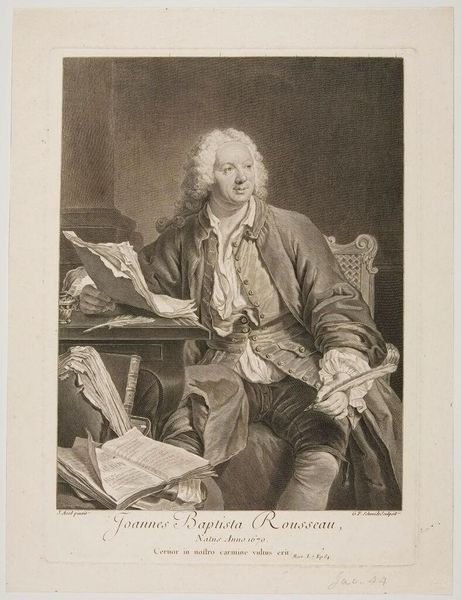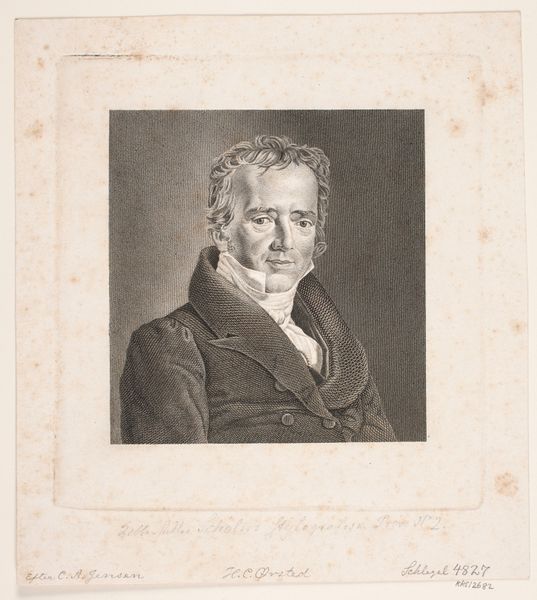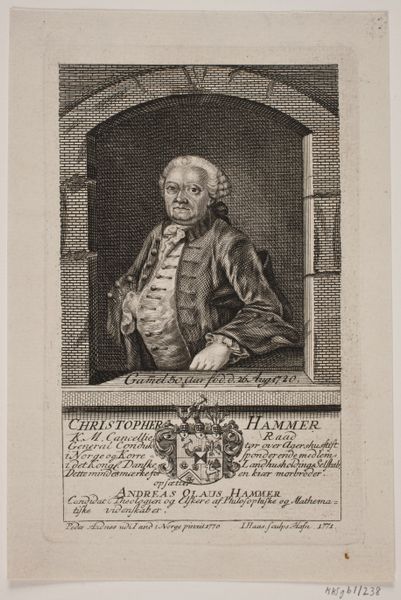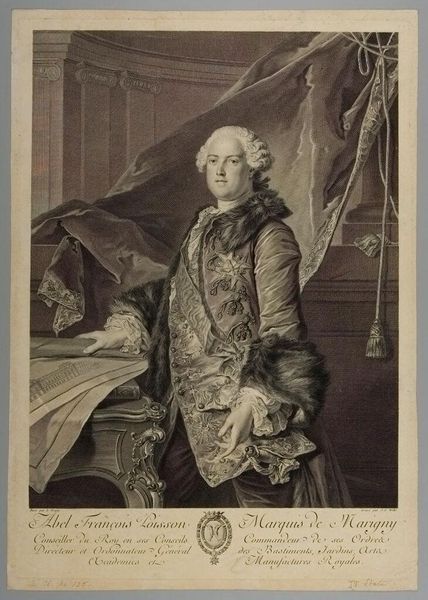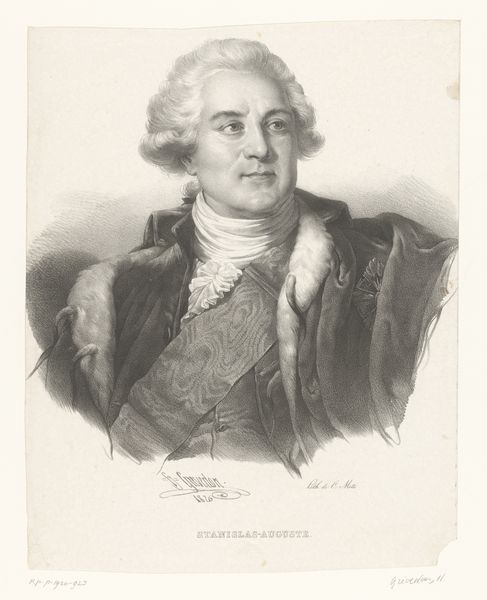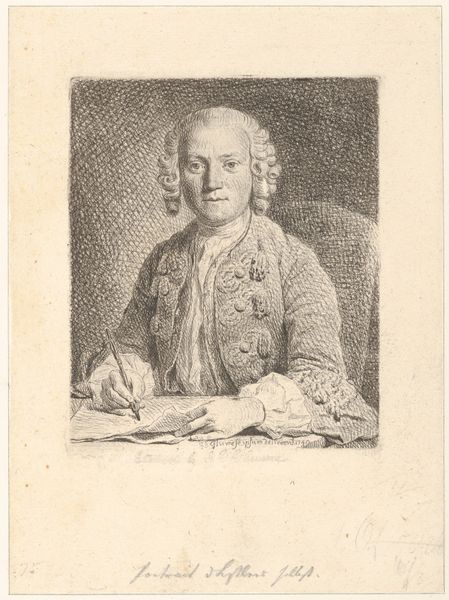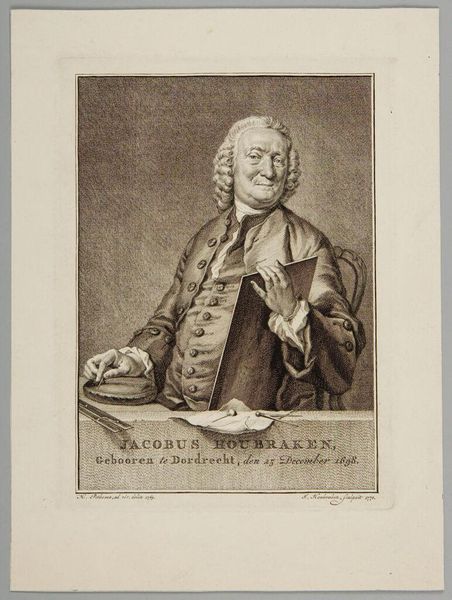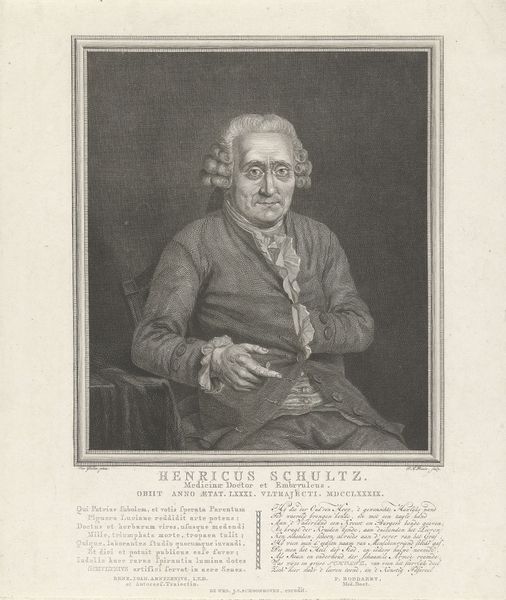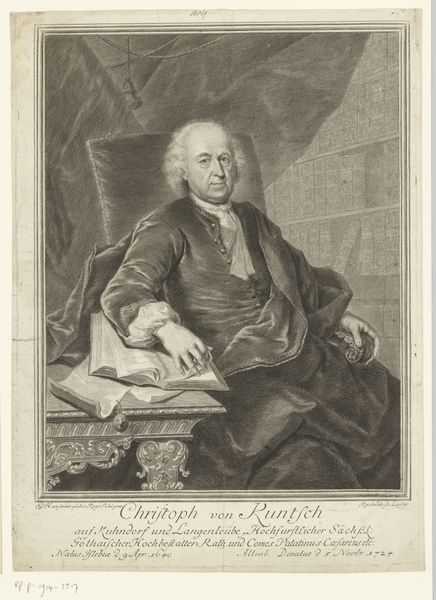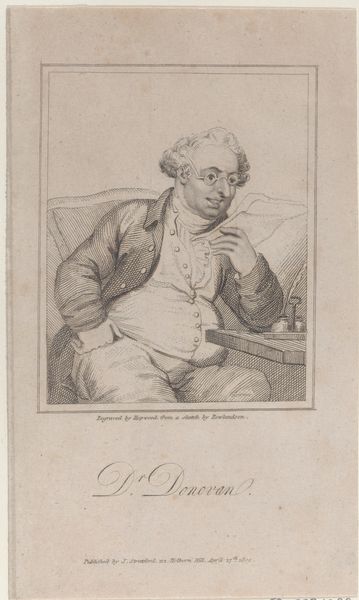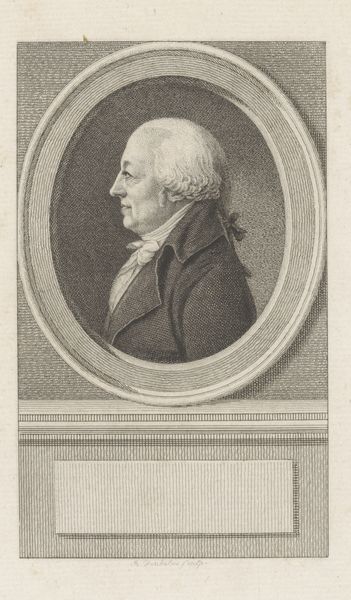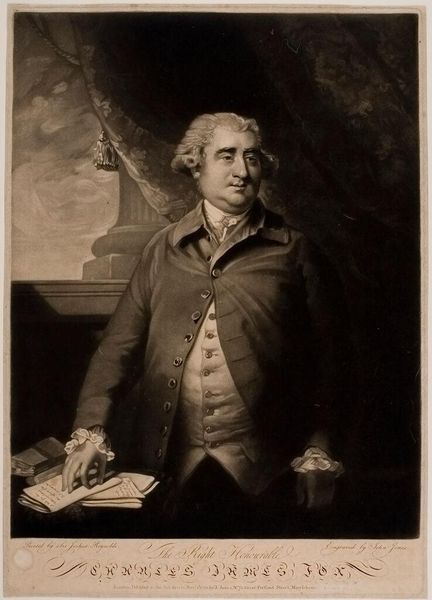
Copyright: CC0 1.0
Curator: Here we have Georg Friedrich Schmidt's portrait of David Splitgerber. Immediately, I'm struck by the way Splitgerber's gaze meets ours, as if challenging us. Editor: Indeed, the sitter's directness is compelling. But I'm also drawn to the material processes at play here. Look at the rendering of the folds in the drapery, and how they denote the sitter's wealth and status in society. Curator: The context of wealth and status is key. Splitgerber, as a merchant and banker, represented the rising power of the bourgeoisie. Schmidt captures not just his likeness, but his position in a shifting social order. The portrait reflects the values of the Enlightenment and the growing emphasis on individual achievement. Editor: And it’s achieved through meticulous engraving—a demanding, labor-intensive process. The final product, this print, speaks to the circulation of images and ideas within that society. Curator: It is a striking example of how art served the interests of power, but also documented its evolution. The symbolism of the sitter's attire and pose reveals much about the values of his time and about emerging notions of masculinity. Editor: Analyzing the craftsmanship reveals the social conditions of its creation and consumption. It really is a stunning piece. Curator: Absolutely. It makes me consider the legacies we inherit and the stories we choose to tell.
Comments
No comments
Be the first to comment and join the conversation on the ultimate creative platform.

